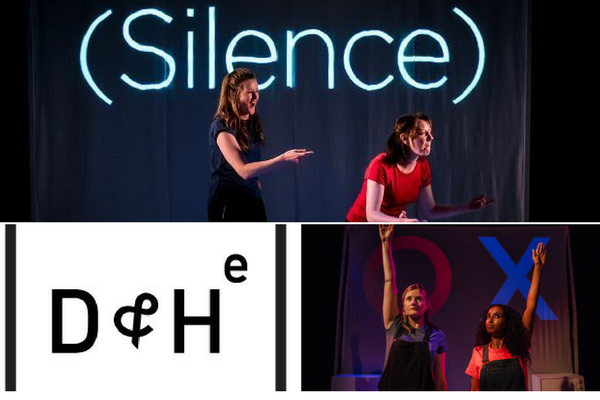Going to the theatre is an experience enjoyed and cherished by many families, especially during the festive season. However, like many other recreational activities, theatres and shows often fail to be wholly inclusive of disabled people. Although the accessibility of venues has now begun to increase, the content and suitability of productions for those with specific impairments continue to exclude disabled people from enjoying these shows for themselves. Guest blogger Pippa Stacey, one of this year's Olivier Awards Be Inspired Champions, explains...
However, one theatrical company with inclusivity at its heart is The Deaf and Hearing Ensemble. Featuring cast members with and without hearing impairments, the company’s latest creation, PEOPLE OF THE EYE, has been hailed a roaring success by both deaf and hearing audience members. Based on writer Erin Siobhan Hutching’s own experiences of growing up with her deaf sister, the play tells of the ‘complex love that binds families together’, as well as exploring the ‘idea of culture versus disability’. Not only does the show’s engaging storyline entertain the non-disabled audience, but the attention to special effects and stunning visuals creates an immersive experience that can be particularly enjoyed and appreciated by hearing-impaired audience members too.
The ensemble’s unique creative process sees accessibility put at the heart of the production, rather than falling into the trap of only addressing access issues as an afterthought. Writer Erin finds that this “makes the work so much more interesting, then it brings layers to the narrative… all of the decisions we make
Whilst the show was primarily designed with hearing-impaired audiences in mind, universal accessibility is also of utmost importance to The DH Ensemble. Creative-visual lighting effects play an integral role in making People of The Eye such an immersive experience for the audience, and yet Erin recognises that these effects could act as a barrier to those with other conditions. The production team
As well as issues
“What one person wants or needs could be very different to another”, she says, “I think it’s important to make sure everybody in the team feels really comfortable”. One of the steps taken led to the inclusion of an interpreter, who also travelled as part of the creative team. “Her responsibility was to manage any volunteers we had. We’d try to get a couple for each venue who knew sign language for the bar and the box office, or if we didn’t she’d be out there herself, making sure everybody had a pleasant time and felt welcome when they got there”.
The isolation that disabled people continue to face in our society is something that Erin is all too aware of. “Deafness isn’t necessarily a disability that cuts you off physically or intellectually, but it’s isolation that can really affect people who have hearing
People of The Eye has received strongly positive feedback from theatre reviewers and audience members alike, and the ensemble

